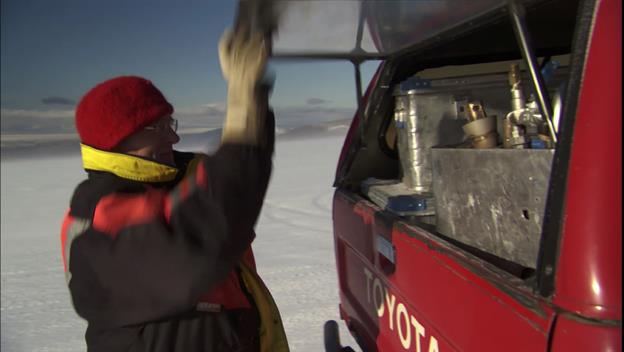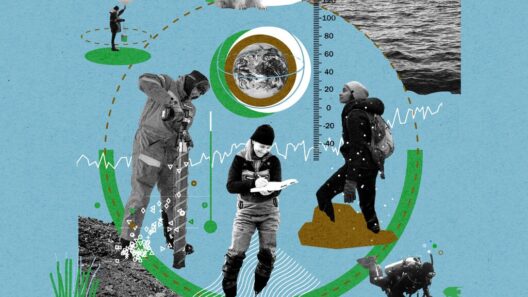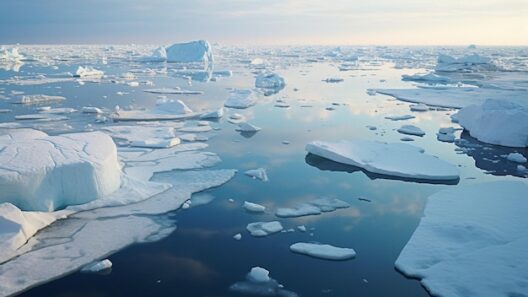Global warming, a pressing concern of our time, prompts many to ponder whether such climatic shifts have occurred before in Earth’s extensive history. To entertain this inquiry requires an examination of geological eras, each marked by dramatic transformations in climate, biodiversity, and the very fabric of life itself. Indeed, Earth’s climate has undergone significant fluctuations long before the modern industrial era commenced.
To understand the current state of global warming, we must first explore the concept of climate change as a natural phenomenon. Throughout Earth’s 4.5 billion-year history, the planet has experienced a plethora of climatic transformations, numerous ice ages, and periods of intense warmth. These were often spurred by factors such as plate tectonics, volcanic activity, solar radiation variations, and even the Earth’s axial tilt.
The most significant interchange of climate occurred during the Paleozoic Era, particularly in the Carboniferous period (approximately 359 to 299 million years ago). During this epoch, lush rainforests flourished in high atmospheric carbon dioxide conditions, resulting in a climate that was significantly warmer than today. Subsequently, as vegetation thrived, vast amounts of carbon were sequestered in the form of organic matter, leading to what we now know as fossil fuels.
Fast forward to the Mesozoic Era, encompassing the Triassic, Jurassic, and Cretaceous periods, where the planet experienced one of its warmest climates. Dinosaurs roamed lush landscapes, and evidence suggests that polar regions were devoid of ice and inhabited by a diverse array of plant and animal life. The Mesozoic climate was distinguished by high sea levels and minimal polar ice, indicating a greenhouse world where temperatures were far exceeding today’s averages.
However, such balmy temperatures were not the norm. The transition from warmth to cold witnessed several notable reductions in temperatures, culminating in the Cretaceous-Paleogene mass extinction about 66 million years ago, possibly initiated by a colossal asteroid impact. This cataclysm led to a drastic decline in global temperatures, ushering in the subsequent Paleogene period, which saw the development of ice ages.
During the Quaternary period, which began around 2.58 million years ago, the planet underwent extensive glacial cycles interspersed with warmer interglacial phases. These oscillations reveal the earth’s climate resilience and adaptability, shedding light on how ecosystems can respond to substantial climatic shifts. Different species thrived during warm interglacials, while extinction and migration occurred in response to glaciation.
One might ponder whether current global warming reflects a natural continuation of these historical patterns. Notably, paleoclimatic data elucidate how temperatures, on occasion, surpassed contemporary measures, such as during the Mid-Pliocene Warm Period approximately 3 million years ago, when global temperatures were estimated to be 2 to 3 degrees Celsius warmer than today. This period bore witness to expansive forests in regions now dominated by tundra, illustrating the potential for significant climate-induced changes in biodiversity.
Yet, the critical distinction between these past instances and today’s situation lies in the cause of warming. While solar cycles, volcanic eruptions, and natural phenomena have historically contributed to climate shifts, the current warming trend is primarily attributable to anthropogenic factors. The combustion of fossil fuels, deforestation, and industrial activities have precipitated an unprecedented influx of greenhouse gases into the atmosphere, accelerating the warming process far beyond natural rates observed in the geologic past.
This acceleration prompts a vital query: how do we reconcile the historical occurrences of global warming with the present scenario? The fossil record reveals that past warm periods were often followed by extinctions and dramatic shifts in biodiversity. Coral reefs, once vibrant ecosystems, face dire consequences due to increased ocean temperatures and acidification. Likewise, terrestrial ecosystems are experiencing corresponding disruptions, with polar bears, for example, losing their ice habitat.
When evaluating the cyclical patterns of warming throughout geological time, it becomes crucial to acknowledge that today’s trajectory carries unique implications. Unlike previous warm periods that unfolded over extensive timescales, the rapid pace of current climatic changes is unparalleled. As the Earth warms, understanding the implications of these climatic shifts on social, ecological, and economic systems is more pressing than ever.
In conclusion, the assertion that global warming has transpired before in Earth’s history is not only accurate but also a reminder of the Earth’s dynamic climatic history. The extensive record suggests adaptability and resilience, but also profound consequences stemming from abrupt changes. Today’s scenario, however, is tinged with urgency, underscoring the need for immediate action. With our understanding of past climates, we must now embark upon a transformative journey, aiming for sustainability and harmony with the planet. Educational endeavors, policy reform, and community engagement are essential to not only acknowledge but actively combat the threat of climate change. Addressing global warming is not merely a scientific necessity; it is a moral imperative that shapes the legacy we leave for future generations. The echoes of history compel us to strive for a more sustainable future, one that balances human activity with the planet’s health.







